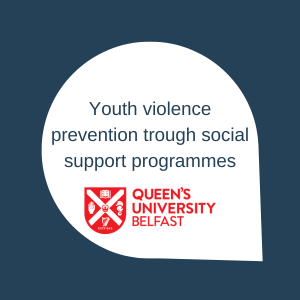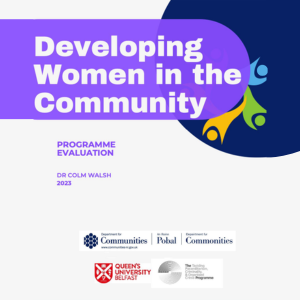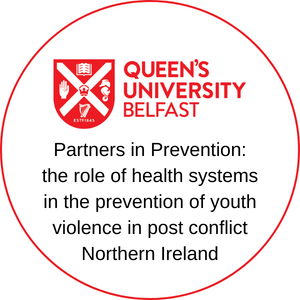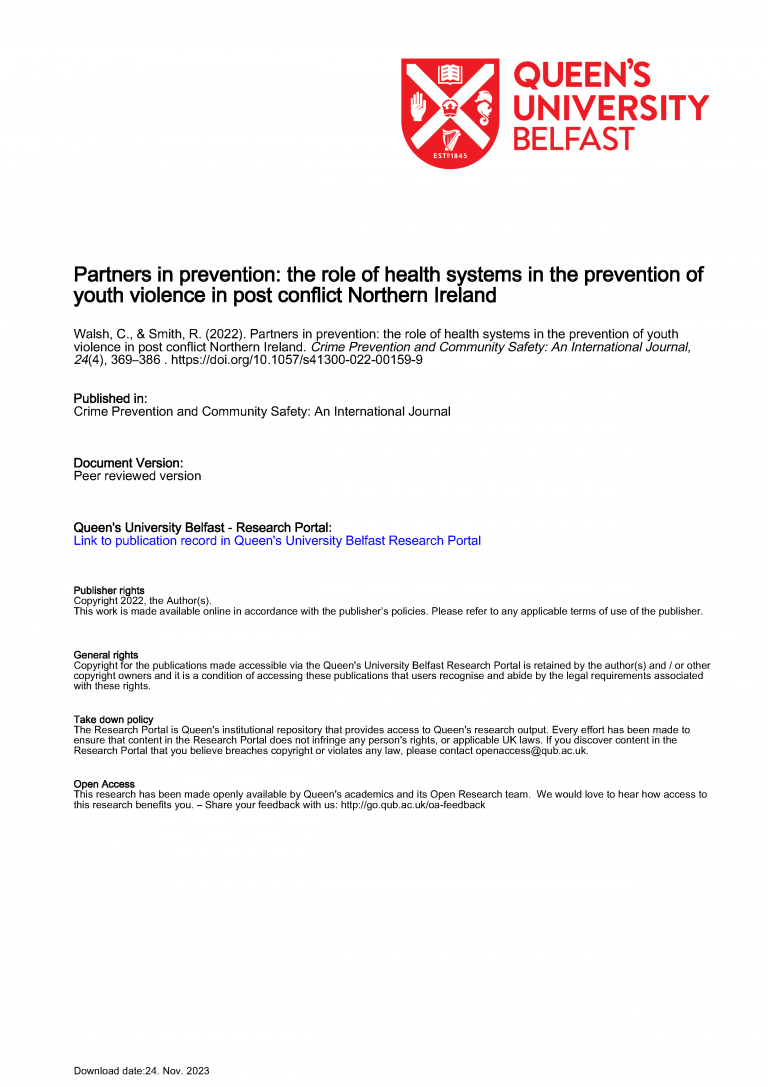New research published in the Journal of Child & Adolescent Trauma explores the links between social support, psychological stress, and youth violence. The study, which was part of a wider evaluation of the Engage project funded through the Northern Ireland Tackling Paramilitarism and Organised Crime Programme, surveyed over 600 young people aged 10-25 participating in a youth work programme in Northern Ireland.
The results found extremely high rates of exposure to violence and trauma among the sample, with over 40% screening positive for probable PTSD. Elevated psychological stress was associated with a greater intention to engage in physical violence; however, social support emerged as a key protective factor – operating through reduced psychological stress to decrease the risk of violence.

The author concludes that even for youth in high-risk environments, positive social connections can disrupt the “cycle of violence” by buffering the negative impacts of trauma. Specialist youth work approaches are uniquely positioned to provide such informal support. The research advances understanding of youth work’s role in violence prevention, while highlighting priorities like enhancing community engagement and volunteer opportunities.
Overall, the study makes the case that supporting vulnerable young people’s mental health and social wellbeing should be central to addressing youth violence in Northern Ireland.
To read the report, please click on the link below.




